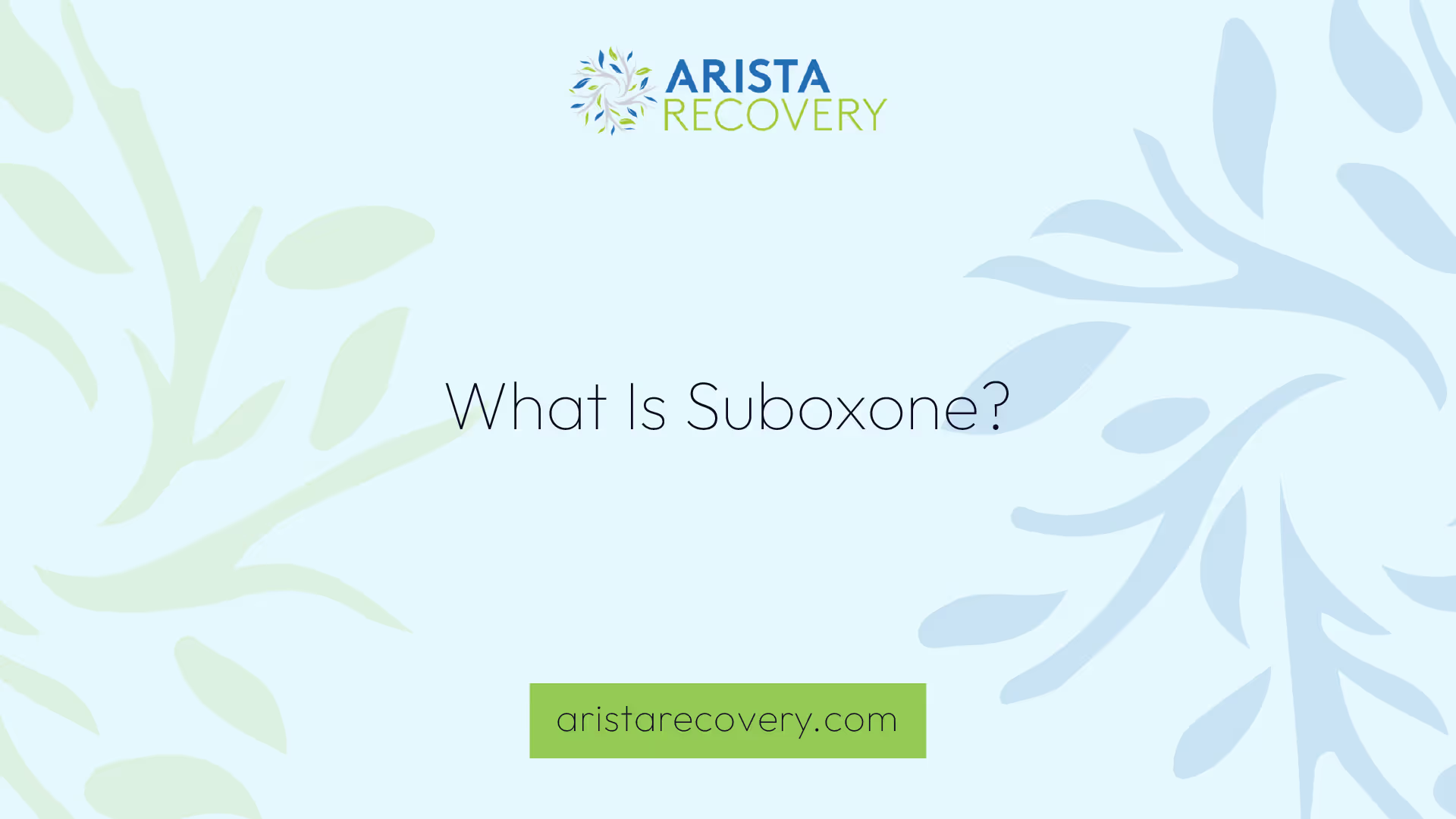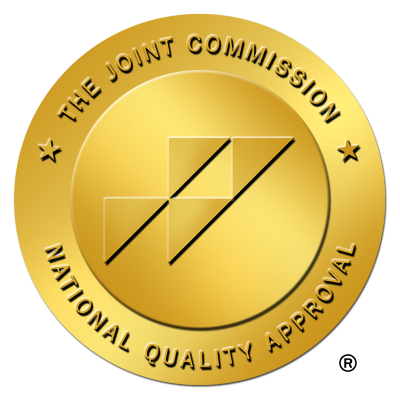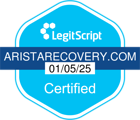What Is Suboxone?

Understanding Suboxone
For those asking "what is Suboxone?" it is a prescription medication approved for the treatment of opioid addiction and dependence. This includes dependence on opioids such as heroin, morphine, and prescription painkillers. Suboxone is used in the context of medical, social, and psychological support for adults and children over 15 years old who have agreed to receive treatment.

The Two Components of Suboxone
Suboxone is composed of two active substances: buprenorphine and naloxone. Buprenorphine is a partial opioid agonist, which means it activates the opioid receptors in the brain, but to a lesser extent than full opioid agonists like heroin and morphine. This helps to reduce cravings and withdrawal symptoms in patients.
On the other hand, naloxone is an opioid antagonist. It blocks the effects of opioids and can cause withdrawal symptoms if it is injected, which is intended to discourage misuse of the medication.
How Suboxone Works
Suboxone works by binding to the same receptors in the brain that opioids bind to. By doing so, it helps to suppress withdrawal symptoms and reduce cravings for opioids. This makes it easier for individuals to recover from opioid addiction.
When administered as a film that dissolves under the tongue or inside the cheek, it takes about 5 to 10 minutes to take effect. This should be done under the supervision of a doctor experienced in managing opioid addiction [1].
Understanding the workings of Suboxone is crucial for individuals undergoing treatment for opioid addiction. It provides a safer alternative to opioids and forms a key part of comprehensive addiction treatment plans. By reducing cravings and withdrawal symptoms, Suboxone can help individuals regain control of their lives.
Uses of Suboxone
Suboxone plays a crucial role in treating opioid addiction and is typically incorporated into comprehensive recovery plans.
Treating Opioid Addiction
Suboxone is a prescription medication approved for the treatment of opioid addiction and dependence on opioids such as heroin, morphine, and prescription painkillers [2]. It works by reducing cravings and withdrawal symptoms in patients with opioid addiction, making it easier for them to recover.
According to studies, Buprenorphine, one of the components of Suboxone, is effective for the treatment of opioid use disorders, and there are high relapse rates among patients tapered off buprenorphine compared to those maintained on the drug for longer periods. In fact, patients on doses of buprenorphine of 16 mg per day or more were 1.82 times more likely to stay in treatment than placebo-treated patients. Buprenorphine also decreased the number of opioid-positive drug tests by 14.2% according to a meta-analysis.
In the Context of Recovery Plans
Suboxone is typically prescribed as part of a comprehensive recovery plan for individuals with opioid use disorder, which may also include counseling and other support services. This combined approach provides a holistic treatment, helping patients not only overcome their physical dependence on opioids but also address the psychological and social factors that contribute to their addiction.
The use of Suboxone can help to prevent overdose deaths and the spread of infectious diseases associated with opioid misuse. Suboxone treatment can be provided in various settings, including specialized treatment centers, healthcare provider offices, and opioid treatment programs authorized by the Substance Abuse and Mental Health Services Administration.
Understanding the uses of Suboxone and its role in addiction treatment can provide individuals with the insights they need to make informed decisions about their recovery journey. It's essential to remember that Suboxone should always be used under the supervision of a healthcare provider, and individuals should follow their provider's instructions carefully to ensure the safe and effective use of the medication.
Side Effects and Risks
When discussing Suboxone, it's important to consider not only its benefits in treating opioid addiction but also the potential side effects and risks involved. Like all medications, Suboxone can have some effects that might be uncomfortable or harmful to the user.
Common Side Effects
The most common side effects of using Suboxone, affecting more than 1 in 10 people, include insomnia, constipation, nausea, sweating, headache, and withdrawal syndrome. These are typical reactions that can be managed with appropriate care and guidance from a healthcare professional.
It's important that individuals taking Suboxone are aware of these possible side effects. They should notify their healthcare provider if these side effects persist or worsen over time.
Serious Health Risks
While the common side effects of Suboxone are usually manageable, there are severe health risks associated with its use. These include respiratory depression, liver problems, adrenal insufficiency, and allergic reactions.
Moreover, Suboxone is contraindicated in patients with severe respiratory insufficiency or liver problems, and should not be used with certain alcohol-related conditions or medications.
It's crucial for individuals to follow their healthcare provider's instructions carefully when taking Suboxone, as improper use or misuse of the medication can lead to severe side effects, overdose, or even death [5].
In conclusion, while Suboxone can be a powerful tool in the treatment of opioid addiction, it's essential that users are fully informed about the potential side effects and risks. It's always recommended to use Suboxone under the supervision of a healthcare professional who can monitor for any adverse reactions and adjust treatment as necessary.
Regulations around Suboxone
Understanding the regulations around Suboxone supports safer use of the drug. This includes knowing the prescription requirements and understanding its classification.
Prescription Requirements
Suboxone is a prescription medication, which means it can only be obtained with a medical prescription from a licensed healthcare provider. It is typically prescribed as part of a comprehensive recovery plan for individuals with opioid use disorder, which may also include counseling and other support services.
As a prescription medicine, it is crucial for individuals to follow their healthcare provider's instructions carefully when taking Suboxone. Improper use or misuse of the medication can lead to severe side effects, overdose, or even death.
Suboxone contains the active ingredients buprenorphine, a partial opioid agonist, and naloxone, an opioid antagonist. Buprenorphine helps reduce withdrawal symptoms and cravings, while naloxone is included in Suboxone to prevent misuse of the medication [4]. If misused by injection, naloxone can induce withdrawal symptoms in opioid-dependent individuals.
The Schedule 3 Classification
Suboxone falls under the Schedule 3 classification of controlled substances. This classification includes drugs with a moderate to low potential for physical and psychological dependence.
The Schedule 3 classification indicates that while Suboxone has a legitimate medical use in the treatment of opioid use disorder, it also carries a risk of abuse and addiction. This underscores the importance of using Suboxone under the supervision of a healthcare provider and following all prescription guidelines to ensure its safe and effective use.
Understanding the regulations around Suboxone is vital for anyone considering its use in the treatment of opioid addiction. By knowing the prescription requirements and classification, individuals can make informed decisions about their treatment options and use the medication safely and effectively.
Duration and Detection of Suboxone
Understanding the duration and detection of Suboxone is crucial for those currently undergoing treatment or considering it as a part of their recovery journey. This information can help individuals better manage their recovery process and anticipate potential drug test results.
How Long Effects Last
Suboxone is designed to act as a long-lasting treatment option for those dealing with opioid dependence. The effects of Suboxone typically last for about 24 hours, providing relief from withdrawal symptoms and reducing cravings for other opioids. It can block the effects of full opioids like heroin, fentanyl, or morphine for at least 24 hours, with some individuals experiencing effects lasting up to 60 hours.
It's also important to note that the detectable traces of Suboxone in the body differ based on individual health conditions. In healthy individuals, traces of the drug are not expected to be found after 5 to 8 days. However, in those with severe liver disease, traces can be found for 7 to 14 days.
Detecting Suboxone in Drug Tests
Suboxone's detection in drug tests is not as straightforward as with some other substances. It will only be detected in a drug test if the panel specifically tests for buprenorphine or its metabolites, or for naloxone. It does not cause false positives for other opioids [6].
This means that standard drug tests may not pick up Suboxone use unless it is specifically being tested for. As a result, individuals undergoing therapy using Suboxone should inform their healthcare provider or anyone administering a drug test about their treatment to ensure accurate results.
Understanding the duration of Suboxone's effects and its detection in drug tests is crucial for those undergoing treatment. This knowledge can help guide expectations and inform discussions with healthcare professionals to ensure the most effective treatment plan is in place.
Suboxone in Different Regions
Suboxone usage varies across different regions, primarily due to differences in regulatory frameworks, opioid addiction rates, and treatment protocols. This section provides a comparative analysis of Suboxone usage in two major regions, the European Union and the United States.
Usage in the European Union
Suboxone, a medicine used to treat opioid drug dependence, is widely employed in the European Union. It is used in adults and children over 15 years of age, along with medical, social, and psychological support. The medicine must be used under the supervision of a doctor experienced in managing opioid addiction and is obtained by a 'special' prescription due to its potential for addiction.
Suboxone has proven effective in reducing opioid use, with 17.8% of patients having no trace of opioids in their urine after four weeks of treatment. Patients using Suboxone also showed a significant decrease in cravings compared to those with a placebo.
Despite some common side effects, such as insomnia, constipation, nausea, sweating, headache, and withdrawal syndrome, the European Medicines Agency has noted that the benefits of Suboxone outweigh its risks. The combination of buprenorphine and naloxone in Suboxone helps reduce the potential misuse of the medicine. The EU issued marketing authorization for Suboxone on 26 September 2006, valid throughout the EU.
Usage in the United States
In the United States, Suboxone (buprenorphine in combination with naloxone) is recognized by the National Institute on Drug Abuse (NIDA) as an effective treatment for opioid use disorders. High relapse rates have been observed among patients tapered off buprenorphine compared to those maintained on the drug for longer periods.
A Swedish study found that patients maintained on 16 mg of buprenorphine daily had a significantly lower treatment failure rate compared to a control group that received buprenorphine for detoxification followed by placebo [3].
Furthermore, a meta-analysis showed that patients on doses of buprenorphine of 16 mg per day or more were 1.82 times more likely to stay in treatment than placebo-treated patients. Buprenorphine also decreased the number of opioid-positive drug tests by 14.2%.
NIDA emphasizes that buprenorphine must be given at a sufficiently high dose (generally, 16 mg per day or more) to be effective. Lower doses have led to treatment failures and the mistaken conclusion that the medication is ineffective [3].
A NIDA study has shown that a buprenorphine/naloxone combination and an extended-release naltrexone formulation are similarly effective in treating opioid use disorder, with the latter requiring full detoxification before initiation.
In conclusion, both the European Union and the United States recognize Suboxone as an effective treatment for opioid use disorders. However, usage protocols and regulatory frameworks may vary, reflecting local practices and regulatory guidelines.
References
[1]: https://www.ema.europa.eu/en/medicines/human/EPAR/suboxone
[2]: https://www.healthline.com/health/drugs/suboxone-side-effects
[3]: https://nida.nih.gov/publications/research-reports/medications-to-treat-opioid-addiction/efficacy-medications-opioid-use-disorder
[4]: https://www.deadiversion.usdoj.gov/drugcheminfo/buprenorphine.pdf
[5]: https://americanaddictioncenters.org/suboxone/side-effects
[6]: https://www.drugs.com/medical-answers/suboxone-controlled-substance-3571166/


